Reviews
L’argent de poche / Pocket Money
François Truffaut
France, 1976
Credits
Review by Leo Goldsmith
Posted on 18 April 2010
Source MGM/UA VHS
“Everything a child does in a film, it’s as if he were doing it for the first time,” Truffaut often remarked when asked of his fondness for making films with and about children. “So it’s as precious as a home movie.”1 Truffaut’s return to this subject with 1976’s Small Change is also a return to his own firsts as a filmmaker: his short film Les mistons, and his breakout hit The 400 Blows. In many ways, the resulting film is a culmination of a lifelong preoccupation with the ideal of childhood and the child’s role in French life. The film’s title - Small Change, or more literally Pocket Money2 - suggests a collection of loose knick-knacks of seemingly little value, and indeed the film itself takes the form of such a collection, drawing on a scrapbook of friends’ anecdotes, autobiographical episodes, and newspaper articles about children that Truffaut had pocketed over the years.
In its form and subject, then Small Change returned Truffaut to an environment where he was more at home. After the physically and emotionally grueling production of The Story of Adele H. on location in the Channel Islands – not to mention the film’s subsequent failure at the French box office – Truffaut needed to regroup with something a little looser and a little closer to home, both literally and figuratively. And so, Small Change announces itself as being about both the geographic and spiritual heart of France. This is apparent from the very beginning of the film, a wonderfully succinct prologue which finds young Martine, a French schoolgirl in a red, white, and blue gingham dress, writing a postcard Bruére-Allichamps, the exact geographic center of the country. Martine writes to her cousin Raoul about her anticipation of summer camp - she hopes it will be co-ed - and then, with a nod from her father (played in a brief cameo by Truffaut himself), drops the card in a postbox. The film is thus set in motion, and transitioning with a brief wipe, a torrent of children descends into the frame, literally dozens of kids stampeding down the stone steps of the town of Thiers on their way to school.
What follows extends much of the chaotic, exhilarating feeling of these opening moments—Small Change is a film that’s endlessly fascinated and delighted by the misbehavior of children. Trading insults and dirty jokes in the schoolyard; goofing off in class while breathlessly awaiting the final bell at 4:30; stubbornly resisting their parents’ and teachers’ orders and questions: the assorted rascals in the film’s non-sequitur vignettes remind one of more frivolous subsequent French “youth films,” like La Boum. But Truffaut’s intentions are rather more serious than many of the film’s more lighthearted episodes suggest, and indeed his decision to start the film in the geographic center of France and to situate most of its action in Thiers, in the heart-shaped Massif Central plateau close to the south of France, indicates a great deal about his objectives for the film. Rather than focus on the lives of one or a few specific children, as he had in Les mistons, The 400 Blows, and even The Wild Child, Truffaut instead proposes a more general view, a collective portrait that comprises the range of experience of French children. The film fondly sketches familiar, but intimate coming-of-age stories, especially of the romantic variety - a double-date at the movies, a boy’s crush on his friend’s mother, a first kiss - but Truffaut’s subject is just as much the role of children in society, something about which his young characters (and stars) would actually have little understanding.
Not that Truffaut was himself unaware of this: then in his mid-forties, he understood that his relationship to the subject of childhood had evolved over time. “I believe that in directing The 400 Blows I was Antoine Doinel’s brother, in The Wild Child, I was Victor’s father, now, I’m a grandfather.”3 (By this measure, a then-eightysomething Jean Renoir was apparently moved to tears when Truffaut showed him the film.) This shift in perspective is most keenly felt in the scenes featuring Lucien, a solitary boy placed in the school by the Welfare office who is later discovered to be the victim of his guardians’ abuse. At first, Lucien seems like an updating of young Antoine Doinel, and he even replicates Antoine’s visit to an amusement park late in the film. But the various pleasures of the amusement park do not offer Lucien the kind of temporary euphoric release that Antoine (and vicariously, the audience) enjoys in the centrifuge in The 400 Blows. Instead, they only remind him of the kind of bourgeois frivolities that he cannot afford, and he waits around until the happy, affluent families have gone home to scrounge around for tiny valuables - a bracelet, a comb, and even some spare change - that have fallen out of the pockets of people thrown about on the rides.
While there is a good deal of sociological hand-wringing in the film, especially with regard to the comparatively marginal character of Lucien, this is not to say that Truffaut’s film is in any way clinical or dull. (By contrast, the following year, Godard offered a decidedly more studied take on the place of children in France with France/tour/detour/deux/enfants.) Indeed, part of the film’s great appeal lies in its combination of giddy child-like humor, easily relatable incidents, and sympathetic characters. Truffaut himself regarded the film as a collaboration with his child actors, and this sense of multiplicity and improvisation, especially in contrast to the more narrow focus of his prior film, gives the film a natural, accessible, and utterly unpretentious tone, even when it’s hammering home truisms about children and grown-ups.
This balance Truffaut means to strike - between making a film with children and making one about them - is revealed in one of the film’s clunkiest scenes. Through an agonizingly presented series of events, a mischievous, young toddler named Gregory, left unattended by his mother, falls out of a 14-story window, lands in a bush, and gets up without a scratch. “Gregory went ‘BOOM!”” he says with a saccharine little giggle. Cut to local schoolteacher M. Richet and his wife discussing the episode over dinner: “Incroyable!” exclaims Mme. Richet in response. And indeed it is “incroyable,” mainly because the dummy Truffaut has used in the scene to replace Gregory’s descending body is blatantly phony. But the point of the tale is soon made clear by M. Richet and his wife. “It’s terrifying to think of the way kids are in constant danger,” Richet says, but his wife disagrees. “Kids are very solid. They stumble through life, but they’re not hurt. They’re much tougher than we are.”4
Children do seem to be thicker skinned and more adaptable, at least in contrast to the parents that Truffaut portrays around them. The parents in the film often seem foolish, inept, and insensitive with widely varying degrees of intensity in the film: from the Patrick’s wheelchairbound father (who even has a machine that turns the pages of books for him, in spite of the fact that he still has the use of his hands) to Lucien’s abusive mother and grandmother, who are barely seen except through the lens of a news camera as they are hauled away, kicking and swearing, by the police at the end of the film. With specimens of adult dysfunction like these, Mme. Richet’s point about the toughness of children seems accurate, but Truffaut then quickly quotes Charles Trenet’s popular children’s song, “Children are Bored on Sundays,” which provides the counterargument that kids are also “much sadder than their mothers believe.”
Thus, in Truffaut’s essentialization of youth, children are at once more sensitive and more durable than their grown-up counterparts, an apparent inconsistency that finds some clarification at the end of the film. In a somewhat rambling monologue that at one point oddly advocates for children’s right to vote, the kindly, but matter-of-fact M. Richet, the director’s mouthpiece through much of the film, notes that while his own childhood was painful, he finds himself now “better equipped for adult life than those who were overprotected with love.” His own difficult childhood has taught him the lesson that children should not be “hard-boiled,” but should build stamina—that the inevitable trials of childhood are a process through which to better enjoy and survive being an adult. Truffaut’s film thus reveals itself to be a far subtler take on childhood than the nostalgic look back at one’s youth that it might seem at first glance. It’s a film that wishes to initiate a dialogue between the old and the young, between the young Truffaut and the grandfatherly one, and between the children of the film and the adults that they will grow up to be.
- Interview with Gilbert Adair, 1975, in Ronald Bergan (ed.), François Truffaut: Interviews, 98.↩
- The film was given the title Small Change in the United States to avoid confusion with Stuart Rosenberg’s 1972 film Pocket Money, starring Paul Newman and Lee Marvin, and written by Terrence Malick.↩
- Interview with Joseph McBride and Todd McCarthy, 1976, in Truffaut: Interviews, p.103. This evolution would become even more grandfatherly, perhaps for the worse, in his arch-Freudian conception of childhood in 1983’s The Man Who Loved Women.↩
- Truffaut’s original title for the film was The Tough Skin, a coy reference to his earlier film (about adults) The Soft Skin.↩
More Love on the Run: The Films of François Truffaut
-

Les Mistons
1957 -

Une histoire d’eau
1958 -

The 400 Blows
1959 -
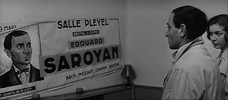
Shoot the Piano Player
1960 -
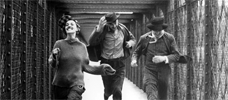
Jules and Jim
1962 -
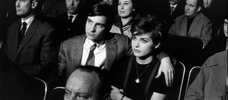
Antoine and Colette
1962 -

The Soft Skin
1964 -
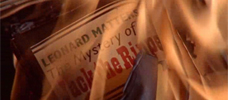
Fahrenheit 451
1966 -

The Bride Wore Black
1968 -

Stolen Kisses
1968 -

Mississippi Mermaid
1969 -
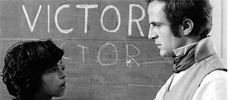
The Wild Child
1970 -

Bed and Board
1970 -

Two English Girls
1971 -
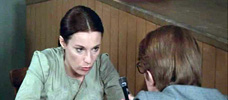
Such A Gorgeous Kid Like Me
1972 -

Day for Night
1973 -

The Story of Adele H.
1975 -

Small Change
1976 -
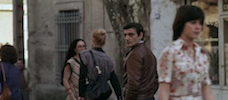
The Man Who Loved Women
1977 -

The Green Room
1978 -
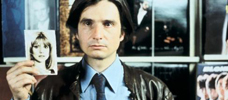
Love on the Run
1979 -

The Last Metro
1980 -
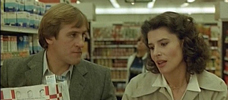
The Woman Next Door
1981 -
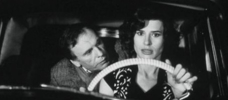
Confidentially Yours!
1983
We don’t do comments anymore, but you may contact us here or find us on Twitter or Facebook.



